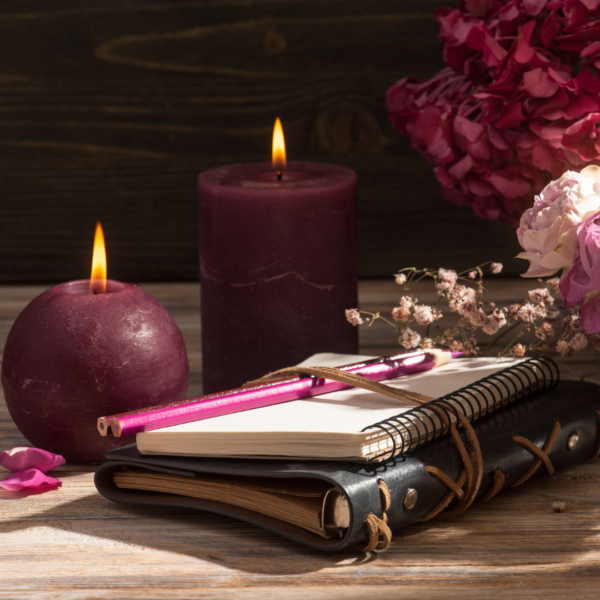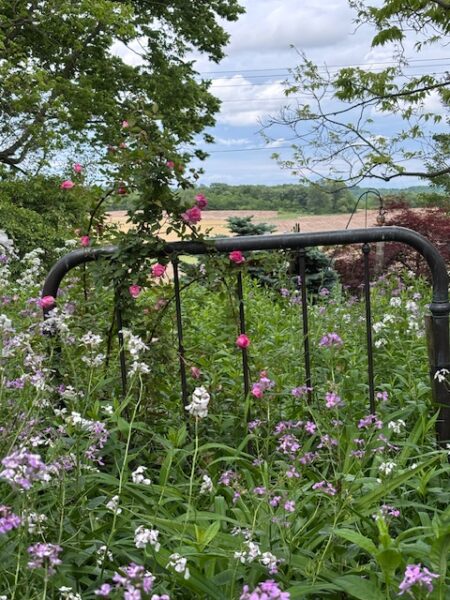Dearest monks, artists, and pilgrims,
 I am away on the wild edges of Ireland this week and John and I are leading a writing retreat with a wonderful group of writers and pilgrims. So I leave you with this reflection I wrote last year on “Writing as a Spiritual Practice.”
I am away on the wild edges of Ireland this week and John and I are leading a writing retreat with a wonderful group of writers and pilgrims. So I leave you with this reflection I wrote last year on “Writing as a Spiritual Practice.”
I am deeply inspired by monastic tradition, one of the great contemplative and mystical strands of Christian heritage, and also present in other religions. Monks were the keepers of wisdom through their commitment to spiritual practice and to the art of writing. Manuscripts were illuminated, bringing word and image together, to shine a light on the poetry, stories, and other wise words that shape our western cultural imagination. I have been a writer for as long as I can remember. At age 8 I penned short stories about 008, the woman spy who had to step in where James Bond failed, marking my simultaneous early journey into feminism as well.
As an adult, I write mostly non-fiction and poetry. My journal is an intimate companion to my days. Writing is often a doorway of discovery to what I didn’t know before. When I write with openness to the unfolding journey, surprises await me on the page. When I fell in love with monasticism in graduate school fifteen years ago, I discovered a set of practices that resonated with the part of me that loves spaciousness and slowness. I slowly came to realize that the contemplative way can also be a gift for our creativity as well, nurturing it in powerful ways.
Silence and Slowness
In our busy lives we miss so much of the texture, nuance, and depth of the world around us. At heart, the contemplative life is about being willing to slow down enough to really see the wonders of life at work all around us. We embrace times of silence to allow a different voice to speak, a wiser and more centered voice than the anxious narrative many of us have running continually through our minds. What might happen if we allowed a few minutes each day to descend into the well of stillness?
Sacred Tools and Rituals
The Benedictine tradition encourages us to consider all things, people, and time as sacred. Benedict’s Rule states that the tools of the kitchen are to be treated with as much reverence as the sacred vessels of the altar. What if we treated the tools of our writing practice as sacred tools as well?
Blessing is an act of gratitude that honors the capacity for something to offer more than we expect in return. What if we began our writing time with a blessing for our creative work, blessing our hands as vessels, blessing the pen and paper (or laptop) as the implements of our expression?
Sacred Encounters and Hospitality
Benedict also wrote that every stranger who comes to the door is to be treated as the face of the divine. Creativity has a way of stirring up a multitude of inner voices, whether the perfectionist, the critic, or the judge. When we resist those voices we often end up feeling stuck or blocked. Writing as a contemplative practice calls us to make room for whatever shows up in a given moment and to treat it with respect, even as it may cause us some fear and trembling.
When the strangers that arrive into our lives, whether circumstances that make us uncomfortable, or parts of ourselves longing for integration, what would happen if we treated these guests as doorways to the divine presence? All of life has the potential to become a meeting place for the sacred. This can become the foundation for our writing.
Sacred Rhythms and Time
In the monastery, the unfolding of time is honored as sacred. The monks would pause about every three hours to gather together for prayer. This was a way of remembering throughout the day their source and mission. In addition, these Hours of the day were considered each unique in their invitation. Benedictine monk David Steindl-Rast writes in his book Music of Silence that each Hour has its own quality and question for us. The dawn calls us to awaken to a new day and new possibilities. Noon reminds us of the fullness of time and our own fruitfulness. Dusk invites us to remember our limits and that everything comes to an end. Midnight reminds us of the grace of incubation and offers us space for reflection and renewal. When we honor the rhythms integral to nature, we allow our own creativity to flourish. Nature can’t sustain a perpetual spring and summer, so why do we expect the same from our creative life? What if blocks were simply times the soul was lying fallow in preparation for a future harvest? What if stepping away from our work and allowing some time for silence was necessary to keep the inspiration flowing? Sometimes we try to fit our creativity into a pre-designed mold rather than listening to our own creative rhythms and how they want to unfold.
Writing as Pilgrimage
In the Celtic monastic tradition, one of the unique and key features was peregrinatio, a practice of stepping into a coracle without an oar or a rudder and letting the winds and the currents carry them to the “place of their resurrection.” At heart this was a practice of pilgrimage which signaled a profound surrender to the heart of mystery and where it might lead them. Our writing practice might garner some wisdom from this ancient way of wandering. What if we tried to direct things less and yield more to the flow of the current of creativity at work in our lives? What if we became less concerned with product and more so with process?
You are the Veil
One of the best-known Irish monks, Brendan, is described as embarking on a great voyage to find the island promised to the Saints. His journey can be seen as a metaphor for the creative process. He sets his sights on a goal and gathers a community with him for support. They end up sailing in circles for seven years, while Brendan hopes to finally “arrive” at his desired goal. Along the way he encounters many magical places like the island of the birds, where the avian chorus joins him and his monks in their singing of the psalms, and the whale upon which they land and celebrate Easter mass. His journey is a reminder of the grace and wonder available to us along the way and the fruits of our practice.
As he travels onward though, he becomes impatient with the circles he seems to be making and wants to know how much longer it will be. How many times do we hold off on our own creative expression, waiting for the perfect moment when our schedules suddenly clear away (a moment which sadly never arrives)? Finally Brendan has a profound realization. He discovers that he is the veil that hides the paradise he seeks. He is getting in his own way through all of his reaching and striving. As soon as he lets go, the island he has been seeking is revealed to him. Much like Dorothy in the story of the Wizard of Oz, home and paradise are right there with him all along, he just needs to see differently.
How might we release the goal we hold too tightly to and become aware of how we get in our own way? What are the ways we can weave time for our creative practice into daily life rather than waiting for some distant perfection of circumstances?
Sacredness of Work
In the yogic tradition is the concept of tapas, which is the fire or heat we need to bring to our practice to stay committed. Benedict also writes about the good zeal a monk needs to have. Even with this invitation to yield, to allow the process to unfold, to make room for all that is ripening in our creative hearts, there is also an invitation to do the hard work necessary of showing up each day to our practice. The root of the word discipline is disciple. What would it mean to become a disciple of our creativity? This is the paradox at the heart of all creative expression. We need the limits of the riverbank and the discipline of showing up to the page. And we also need the free flowing river, removing all that impedes its direction.
Always a Beginner
Buddhism counsels “beginner’s mind” and Benedict advises that always we begin again. Essential to the creative process is the humility to recognize our own humanness. When we fall away from our practice, instead of endlessly berating ourselves, the invitation is to ever so gently return. When writing becomes a spiritual practice, it opens us up to the possibility of discovery, of gentleness with ourselves, and of following rhythms which are renewing rather than exhausting. Our writing then can help us to break open the ordinary wonders of daily life.
Please consider joining us for Writing on the Wild Edges in 2017.
Stop by Patheos for my next reflection in the 8-week series on Practicing Resurrection.
With great and growing love,
Christine
Christine Valters Paintner, PhD, REACE
Photo © Christine Valters Paintner



